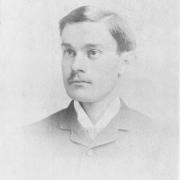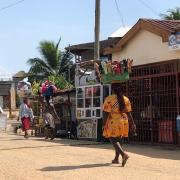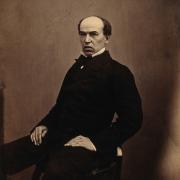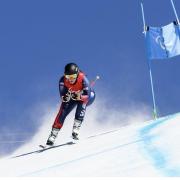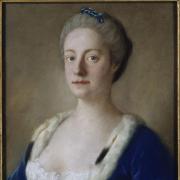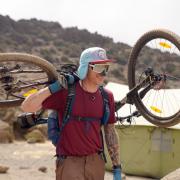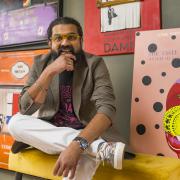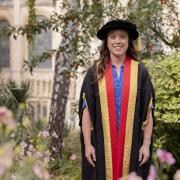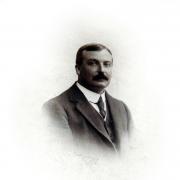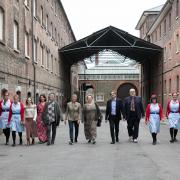Veterinary surgeon Andrew Wills on his practice in Faversham, interest in orthopaedic surgery and love of cycling – and his two rescue cats from Spain
Tell us a bit about you
I live in Blean, it’s on the edge of both the city and the countryside and a 30-minute bike ride or 15-minute car journey to the practice. I moved there a couple of months ago, having lived in Dover for nearly 30 years since qualifying as a vet in 1985.
I was born in Penzance and have lived in many places since, including the Fiji Islands (too young to remember it, sadly), Chichester, Banbury, and Launceston, Bodmin and Truro back in Cornwall.
Although I am deeply proud of my Cornish roots I have lived in Kent for so long it always feels as if I am coming home after being away anywhere.
I’m now 52, and live with two cats having recently sadly separated from my wife of 25 years. I have a terrific, supportive team around me at Toachim House that I couldn’t be without. My son is 19 and studying at Christchurch University in Canterbury so I get to see him quite often.
Tells us about your pets
The cats are a story in their own right. They are mother and son, she is roughly two but was a stray brought into a shelter in southern Spain so we don’t really know her true age, and he was one of her kittens.
Both are pure white, and she had terribly sunburnt ears. My colleague Sarah Bignell has organised an annual trip to this particular sanctuary to neuter and patch up as many cats as we can, raising funds to cover the costs of the trip.
This year I was asked to be one of the two surgeons and we duly flew into Gibraltar in late September with two nurses and suitcases packed with equipment and drugs. Going through customs was a nerve-wracking experience, even though all was legitimate and above board!
It was hard work – we were collected at 8am each day and didn’t stop until at least 9pm – but we managed to operate on 302 cats in the six days we were there, thoroughly exhausting all the volunteers going out at night to catch the stray cats.
While we were there I fell for Lavini and Pyri and decided to bring them back to the UK. It’s much easier to do now with the Pet Passport scheme, no need for quarantine.
When did you want to be a vet?
I’ve always had a soft spot for animals and we’ve had them since I was about three: a cat called Sam, a Cairn terrier called Crofty and Jim the goldfish. All lived to a ripe old age except poor Jim who sadly died during my fourth birthday party – a childhood memory that will never go away!
When I was four I decided I wanted to become a doctor when I grew up. I then read and enjoyed the Gerald Durrell books, so decided I wanted to work with animals too. It seemed only natural to become a vet as it combined both, I never changed my mind and I’ve been lucky enough to be able to do exactly what I set out to do.
My parents made a lot of sacrifices and although I won a scholarship to King’s College in Taunton, they scrimped and saved to get the money together to send me to school there for my A-levels.
Where did you study?
I went to Edinburgh University, qualifying after five years. I went there as it was the only place that gave me an offer; back then there were at least six people applying for every place, so you went where you could.
I’m really glad I went there – Edinburgh is beautiful, a great place to be a student, and I made some lifelong friends there too.
I was lucky enough to go to university in the days when there were no tuition fees and we even got a small grant, which was just enough to pay for rent and food.
Holiday jobs would help – vet students were in demand on farms, especially during the lambing season – but it wasn’t easy. I don’t know how people do it now: a five-year degree course means that vets qualify with debts of around £80,000.
What made you move to Kent?
That’s easy – I was dating a Belgian vet student! As a young, red-blooded male the closer I could get meant the longer we could spend together at weekends, so when a job came up in Dover, which then had the Jetfoil service to Ostend, that was ideal!
The practice was very well equipped, much more so than most, which is always attractive to vets seeking jobs as we all like to ‘play with the toys’. The relationship didn’t work out, but I liked the job and the area, and I’ve been here ever since.
Starting your own practice
In 1998 the practice I was working in was taken over by a corporate group. Although it was good initially, after a while it became a chore – it took ages for any decisions to be made and I seemed to be spending most evenings poring over spreadsheets.
Finally I’d had enough and when a small practice came up for sale in Faversham in 2002, I jumped at the chance as I could see it had huge potential. I had a business plan, and took out a loan from the bank; scary times, but I believed in what I was doing.
Initially there was just myself and two nurses – Stacey and Sam, who are still with us today – but we must have been doing something right because in no time we took on another nurse, then a vet and it just kept growing. Now, including part-time staff, we employ 22 people and have just taken on two more nurses to help us grow.Specialising in complex cases
These days vets are becoming increasingly specialised; as the range of treatments and techniques increases it has become impossible to keep up to date with everything. Just as you would go and see your GP but he wouldn’t operate on you for anything major, to a certain extent the same is happening in veterinary medicine.
Many vets now might specialise in internal medicine, dermatology, cardiology, ophthalmology or, as in my case, surgery, particularly orthopaedic.
I’ve always had an interest in surgery – when I qualified there were no referral centres or specialists apart from at the universities and the waiting times to see one were measured in months, so you had to be able to cope with repairing a fracture one minute, removing a lump the next or dealing with a case of diarrhoea in a Great Dane in evening surgery (never fun!).
Plus pet insurance was virtually unheard of, and many people simply couldn’t afford to be referred to the few specialists about, so we often had to just ‘get on with it.’
I had a very supportive boss who taught me a lot, but often it was a case of getting out the textbook and reading up if you had to do something new; there were no courses.
In many ways I was very lucky to qualify when I did as these days, although there are incredible courses around now and very professional providers, as well as internship and residency programmes, places are limited on the latter and it can be difficult to gain the experience that I did.
Your orthopaedic surgery work
I went on one of the first-ever orthopaedic courses in the UK in 1990, sent by my very supportive boss Steve Spencer, who knew I was keen on surgery. I learnt some great skills. At about the same time the Royal College of Veterinary Surgeons introduced a Certification scheme where vets with a special interest in a particular subject area could sit an exam and demonstrate advanced knowledge in that subject.
I passed at the first attempt in 1993 and started offering a referral service to other practices around the same time. As time went by I found myself doing more and more orthopaedic surgery, and less and less general practice – which is probably why I found all the admin work for the corporate group so annoying.
After taking over the Faversham practice, it seems as though there was a pent-up demand for this type of service in Kent as it certainly contributed massively to the growth of the practice.
Now I spend my working time doing virtually nothing but orthopaedics, which is fantastic for me as it is what I enjoy most.
It’s a challenge, a cross between carpentry and gardening I have heard it described, and extremely rewarding when you see lame, painful pets start to walk and run again, or those that have suffered spinal injuries or road traffic accident victims get up and walk. I admit it, I get a kick out of that sort of thing.
Any special cases?
Singling one out is difficult but there are a couple that spring to mind. The first one would be Jess, who came to us at eight months of age barely able to stand as she had such severe hip dysplasia that both hips were effectively dislocated.
After two hip replacements, her owners sent me a DVD a few months later showing her running at full speed (she was a lurcher, so this was pretty quick!) and leaping into the air after a ball. I still get goosebumps when I think of her.
The second is Alan, a delightful Staffie who came to us at five months of age having broken both his knees playing too enthusiastically. His owners didn’t want to pay to have the surgery done and we couldn’t bear to just put him down, so we ended up taking him on and doing the surgery ourselves.
One Facebook post later and my sister popped up and said she and her husband would have him. He now lives with them and their two young children on a polo pony stud farm in Surrey, and has the best life imaginable with many acres to run around in and lots of mud to jump in.
I was with him at Christmas, and he’s just as adorable as ever – and doesn’t limp!
Your pioneering work
Being in a well-equipped practice in the 1980s, I was lucky enough to work with a colleague who was keen to try new things.
We had a case with severe hip arthritis, a middle-aged Old English sheepdog that could hardly walk as the painkillers just weren’t strong enough.
A pioneering vet in the US, Marvin Olmstead, had just published a series of cases where he had performed a hip replacement, along with his technique, and we kind of thought ‘why not?’.
We, and let’s be honest, the patient, didn’t have a lot to lose so we ordered the instruments and implants and scheduled the op; he was lead surgeon and I assisted. Being the first one it took a long time to do, but it was a success and we believe it may have been the first one performed in the UK.
My colleague left the practice to set up on his own, so I found myself having to fly solo. It’s an incredibly rewarding op to do, pets are normally walking on the leg the same day and are usually better than they were within just a couple of weeks.
Since those early days the techniques and implants have improved tremendously, mainly in the sizes available. We now have hip implants so small that they will fit a chihuahua, right up to a 90 kilogramme mastiff, as well as cats. In fact, according to the manufacturers of the implants, we performed only the fourth hip replacement in a cat anywhere in the world, and the first cat to have both hips replaced. It honestly didn’t feel that pioneering at the time, I guess I’ve always been lucky to be in the right place at the right time that way.
What drives and inspires you?
There are always new techniques to learn, new and better ways of doing things, new implants or instruments that make the job easier or the results better.
I have just completed training in order to be able to perform partial elbow replacements for dogs, where only the worn-out part of the joint is replaced.
That’s much better than existing systems where the whole joint is replaced. The elbow is actually made of three bones, so has three joints within it all doing different things, and mechanically no one has come up with anything that complex.
I’m keen on doing all I can to minimise pain, as I believe very strongly that we owe it to our patients; just because they can’t talk doesn’t mean they don’t feel pain.
I talk from personal experience as I broke my leg skiing in 2001. I underwent surgery with two large screws holding my left knee together and a plate to rebuild the shin bone, and all I was given afterwards was paracetomol – not nearly enough!
I’m also very keen on keyhole surgery and have introduced it to our practice, one of the first in Kent. Seeing dogs up on their feet and looking as though nothing has been done (apart from clipped fur) an hour or two after surgery has got to be good.
Overall, as I have aged, I’ve become more conservative, less willing to do something just because it is new; I still get excited about new things, but it has to be of proven benefit. This month I will be learning about a new technique to promote spinal fusion in dogs suffering from pain caused by discs trapping nerves in their necks.
Your hobbies and interests?
My main passions are cycling and travel. I took up cycling again in 2000 and I’m amazed to see how popular it has become. It keeps me fit and lets me spend time with my mind just wandering. I love the fresh air and the feeling of going great distances under my own steam.
In the spring and summer I compete – I race in ‘bunch’ races, but now mainly in age-group races. It’s still competitive, though, our races tend to be 50-60 miles long and we will usually average around 24 miles per hour. I work with a coach, Ben Wright of BenEFit, and thanks to him I’ve had a really good season in 2014: third place in the Regional Championships (London and South East) and 12th at the Nationals.
I’ve always loved travelling too. Some university friends and I travelled through Africa for several months. It was a pretty wild place back then, with no mobile phones, no internet and a warzone in every other country it seemed. Libya invaded Chad just as we were crossing, so naturally we were arrested as spies – my good friend Graham was listening to music through his headphones, so someone thought we were radioing troop movements to the enemy.
Now I can’t imagine travelling without my bike. I’ve cycled in some amazing places like Vietnam, Cambodia, Thailand, Ecuador and Peru, as well as France – mainly the Alps and Pyrenees. Mallorca is one of my favourites, but I really want to go back to Italy. Coffee stops during the ride, a gelato afterwards by the sea or overlooking a lake with the mountains as a backdrop – paradise!
I also like gardening, music, watching films, and now that I live in Canterbury, I intend to start going to the theatre again. n




